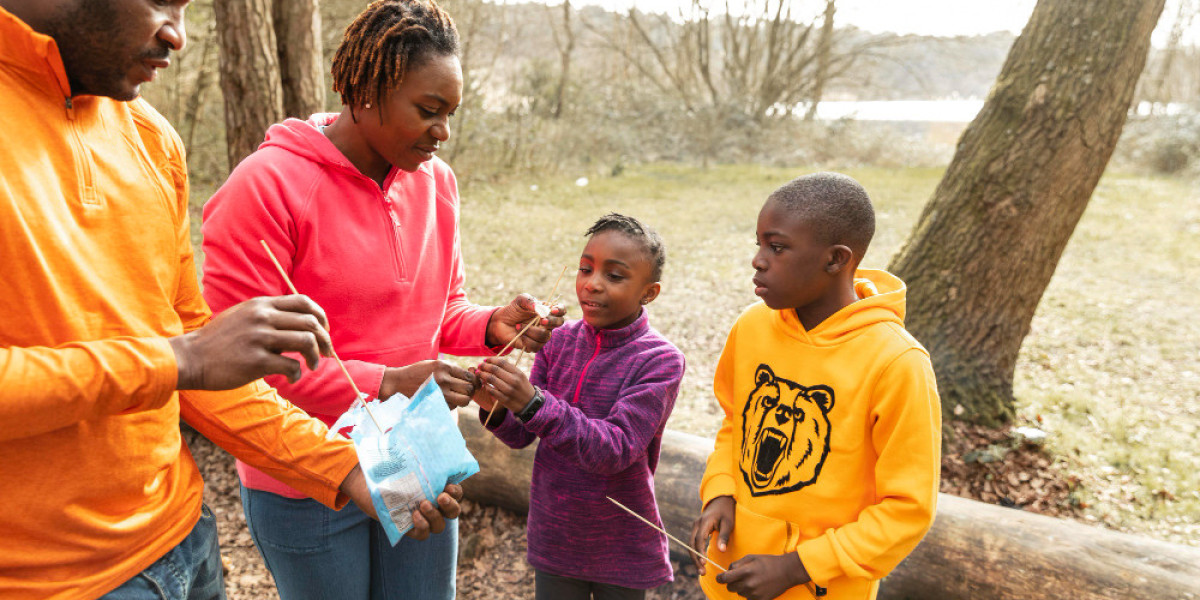Introduction
Poverty and education are intricately linked, particularly in Africa where poverty remains a significant barrier to educational advancement. Understanding this relationship is crucial for developing effective strategies to improve educational outcomes and break the cycle of poverty. This article delves into how poverty impacts education in Africa, explores current initiatives and challenges, and discusses potential solutions.
The Impact of Poverty on Education
Access to Education
Poverty affects a child's ability to access education. Families struggling to meet basic needs often prioritize immediate survival over education, leading to higher dropout rates and lower school enrollment. In many areas, children are forced to work to support their families, leaving little time for school.
Quality of Education
Even when children in poverty-stricken areas manage to enroll in school, the quality of education they receive can be severely compromised. Underfunded schools may lack essential resources, including textbooks, qualified teachers, and proper facilities. This results in a substandard educational experience that hampers students' learning and development.
Long-term Consequences
The long-term consequences of poor education due to poverty are significant. Children who receive inadequate education are more likely to experience limited job opportunities, lower income, and continued poverty as adults. This perpetuates a cycle of poverty that can be difficult to break.
Barriers to Education in Poverty-Stricken Areas
Financial Barriers
Financial constraints are a major barrier to education. School fees, uniform costs, and other expenses can be prohibitive for families living in poverty. These financial demands often force families to choose between education and meeting other basic needs.
Infrastructure and Resources
Infrastructure deficiencies, such as inadequate school buildings, lack of textbooks, and insufficient learning materials, further hinder educational quality. Many schools in impoverished areas operate in dilapidated conditions, which negatively impacts students' learning environments.
Social and Cultural Barriers
Social and cultural barriers also play a role. In some communities, cultural attitudes may undervalue education, particularly for girls. Gender disparities, early marriages, and societal expectations can prevent children from attending school and completing their education.
Current Statistics and Trends
Enrollment Rates
Despite efforts to increase school enrollment rates, many children in Africa still lack access to education. While primary school enrollment has improved in some regions, secondary and higher education enrollment rates remain lower, particularly in rural areas.
Literacy Rates
Literacy rates reflect the quality of education. In many African countries, literacy rates are lower than the global average, particularly among adults who did not receive formal education. Improving literacy is crucial for enhancing overall educational outcomes.
Regional Disparities
Regional disparities are evident in education access and quality. Northern Africa generally has better educational infrastructure and higher enrollment rates compared to Sub-Saharan Africa. Addressing these regional imbalances is vital for equitable educational development.
Government Initiatives and Policies
National Education Policies
Governments across Africa have implemented various policies to improve education. These include initiatives to increase school enrollment, improve teacher training, and enhance educational infrastructure. However, the effectiveness of these policies varies and often faces implementation challenges.
Funding and Investment
Adequate funding and investment are crucial for educational improvement. Many African countries struggle with budget constraints, affecting their ability to provide quality education. Increasing investment in education is necessary to address infrastructure and resource deficits.
Implementation Challenges
Implementing educational policies can be challenging due to factors such as corruption, political instability, and resource mismanagement. Ensuring that policies are effectively executed and monitored is essential for achieving educational goals.
Role of NGOs and International Organizations
Successful NGO Programs
NGOs play a significant role in supporting education in Africa. Programs that provide school supplies, offer scholarships, and build schools help bridge gaps in educational access and quality. Successful examples include initiatives by organizations like UNICEF and Save the Children.
Collaboration with Governments
Collaboration between NGOs and governments can enhance the impact of educational programs. By working together, these entities can pool resources, share expertise, and implement comprehensive strategies to address educational challenges.
Impact and Outcomes
NGO-led projects have shown positive outcomes in improving education access and quality. However, sustainable impact requires ongoing support, effective management, and collaboration with local communities.
Community-Based Solutions
Local Education Initiatives
Community-based education initiatives focus on addressing local needs and challenges. These initiatives often involve community members in the planning and implementation of educational programs, ensuring that solutions are relevant and effective.
Community Support Programs
Support programs, such as after-school tutoring and mentorship, can enhance educational outcomes. Engaging communities in supporting education helps create a supportive environment for learning and development.
Case Studies of Successful Projects
Case studies of successful community-based education projects highlight the effectiveness of local solutions. These examples demonstrate how community involvement can lead to improved educational access and outcomes.
The Role of Technology in Bridging Gaps
E-Learning Platforms
E-learning platforms offer new opportunities for education in remote areas. By providing access to online courses and educational resources, e-learning helps overcome geographical barriers and enhances learning opportunities.
Mobile Education Apps
Mobile education apps provide valuable resources and learning tools. These apps can offer interactive content, practice exercises, and educational games, making learning more engaging and accessible.
Internet Access and Digital Literacy
Improving internet access and digital literacy is essential for leveraging technology in education. Ensuring that students and teachers have the skills and resources to use digital tools effectively can enhance educational outcomes.
Educational Innovations and Practices
Alternative Education Models
Alternative education models, such as community schools and informal learning centers, offer flexible and innovative approaches to education. These models can address specific needs and challenges faced by students in poverty-stricken areas.
Innovative Teaching Methods
Innovative teaching methods, such as experiential learning and project-based approaches, can improve engagement and learning outcomes. Adapting teaching practices to the needs of students helps enhance the quality of education.
Curriculum Development
Developing relevant and inclusive curricula is crucial for effective education. Curricula that reflect local contexts and address the needs of diverse learners contribute to better educational outcomes.
Improving Access to Quality Education
School Infrastructure Improvements
Improving school infrastructure, such as building new classrooms and upgrading facilities, is essential for creating conducive learning environments. Well-maintained schools support better educational experiences for students.
Teacher Training and Development
Investing in teacher training and development enhances the quality of education. Providing teachers with professional development opportunities helps them adopt effective teaching methods and improve student outcomes.
Curriculum and Resource Upgrades
Upgrading curricula and educational resources ensures that students receive relevant and high-quality education. Access to up-to-date materials and resources supports effective teaching and learning.
The Link Between Education and Economic Development
Education’s Role in Economic Growth
Education plays a crucial role in economic growth by equipping individuals with skills and knowledge needed for the workforce. A well-educated population contributes to increased productivity and economic development.
Reducing Poverty Through Education
Education is a powerful tool for reducing poverty. By providing individuals with skills and opportunities, education helps break the cycle of poverty and promotes economic mobility.
Case Studies and Examples
Case studies and examples of successful educational interventions highlight the impact of education on poverty reduction. These examples demonstrate how effective education programs can lead to improved economic outcomes.
Challenges in Implementing Educational Reforms
Political and Economic Obstacles
Political and economic obstacles can hinder the implementation of educational reforms. Addressing issues such as political instability, corruption, and economic constraints is crucial for successful educational change.
Resource Allocation Issues
Resource allocation issues, such as inadequate funding and mismanagement, affect the effectiveness of educational programs. Ensuring that resources are used efficiently and equitably is essential for improving education.
Sustainability and Scalability
Ensuring the sustainability and scalability of educational reforms is important for achieving long-term impact. Developing strategies for sustaining and expanding successful programs helps ensure continued progress in education.
Future Outlook for Education in Africa
Emerging Trends and Solutions
Emerging trends and solutions, such as digital education and community-based programs, offer new opportunities for improving education in Africa. Staying informed about these trends helps in developing effective strategies for the future.
Long-term Goals and Strategies
Setting long-term goals and strategies for education helps guide efforts and measure progress. Focusing on key areas such as access, quality, and equity supports the development of a robust educational system.
Potential for Improvement
There is significant potential for improvement in education in Africa. By addressing current challenges and leveraging new opportunities, stakeholders can work towards achieving better educational outcomes for all children.
How Individuals Can Contribute
Volunteering and Advocacy
Individuals can contribute to improving education by volunteering with educational organizations and advocating for educational policies. Engaging in these activities helps support educational initiatives and raise awareness about important issues.
Donations and Support
Donations and financial support for educational programs can make a significant impact. Contributing to organizations that work to improve education helps provide resources and support to those in need.
Raising Awareness
Raising awareness about education and poverty issues helps mobilize support and drive action. Sharing information and engaging in discussions about these topics can lead to increased efforts and resources dedicated to addressing educational challenges.
Conclusion
Poverty and education are deeply intertwined issues in Africa, affecting millions of children and their futures. Addressing these challenges requires a comprehensive approach involving governments, NGOs, communities, and individuals. By improving access to quality education, investing in resources, and supporting innovative solutions, we can make a meaningful difference in the lives of African children and help break the cycle of poverty. Every effort counts in building a brighter future for the continent.








